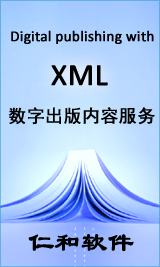王学
,
李勇
,
任遥遥
,
刘洪伟
,
刘洪
,
王伟
金属学报
doi:10.11900/0412.1961.2014.00167
对P92钢进行650℃,0~5000 h时效实验,采用萃取复型和电化学萃取2种方法分离时效样品中的沉淀相,采用电感耦合等离子体发射光谱仪和EDS测定萃取物中合金元素的含量,揭示Laves相析出引起的合金元素再分布规律.利用Brinell硬度计测试P92钢时效过程中的硬度变化.根据合金元素再分布特性,建立基体溶质原子贫化损伤演化方程,采用基于物理本质的CDM模型评价其析出对P92钢蠕变寿命的影响.结果表明,时效前P92钢中约86%的W和Mo固溶于基体,剩余的14%分配在M23C6中.P92钢时效过程中由于Laves相析出发生合金元素的迁移,其析出主要夺取基体中的W和Mo原子,对时效前己析出的M23C6和MX相的成分影响很小.Laves相完全析出后,基体中W和Mo的分配量均降至50%左右.Laves相的析出还消耗基体的一部分Cr,使其分配量减少约3.6%.Laves相析出明显削弱溶质原子的固溶硬化作用,CDM计算表明,其析出使P92钢在650℃,100 MPa下的蠕变寿命缩短24%左右.
关键词:
P92钢
,
Laves相
,
合金元素
,
再分布
K. Mii (Sumitomo Metal Industries
,
Ltd.
,
1-t-3 Otemachi
,
Tokyo 100
,
Japan)M Amano (National Research Institute for Metals
,
1-2-1 Sengen
,
Tsukuba 305
,
Japan)
金属学报(英文版)
The R & D of hydrogen absorbing alloys in Japan started in the early 1970s.Many alloys such as TiMm1.5 based alloys, Fe-Ti-O alloys (e.g. FeTi1.15 O0.024) andthe(mischmetal)Ni5 based alloys (e.g. MmNi4.5 Cr0.46 Mn0.04) were developed by the early 1980s. The application of these alloys to hydrogen storage, heat storage, heat pump, hydrogen purification and motor vehicles has been tried in many iaboratories,and the various techniques for using hydrogen absorbing alloys have been developed.The standarkization of evaluation methods for hydrogen absorbing alloys has been promoted by the Ministry of International Trade and Industry (MITI), and four of them were established as Japanese Industrial Standard (JIS).Alloys for Ni-Metal Hydride batteries have been extensively investigated since 1987in Japun. Mm-Ni-Co-Al-Mn alloys (e.g. MmNi3.55 Co0.75Al0.9Mn0.4) have been devel-oped and commereialized since 1990. The amount of production of small-size Ni-MH batteries in 1995 was about three hundred milliion in number and about one hundred billion yen. The R & D for higher enerpy-density Ni-MH batteries is intensively in progress.MITI and STA (Science and Technology Agency) have promoted the R & D of hydro-gen absorbing alloys in Japan by carrying out the national projects such as Sunshine Program (MITI: 1974-1993) and Utilization of Wind Engeray (STA 1980-1985). The New Sunshine Program (MITI 1993-2020) have started in 1993. This program con-tains the application of hydrogen absorbing alloys to Economical- Enerpy- City System and to We-NET (International Clean Energy System of Technology Utilizing Hydro-gen: World Energy Network.
关键词:
hydrogen absorbing alloy
,
null
,
null
,
null
C.G. Zhou
,
H.B. Xu and S.K. Gong (Department of Materials Science and Engineering
,
Beijing University of Aeronautics and Astronautics
,
Beijing 100083
,
China) K. Y. Kim (Department of Materials Science and Engineering
,
Pohang University of Science and Technology
,
San31
,
Hyoja-dong
,
Pohang 790-784 Korea)
金属学报(英文版)
The halide-activated pack cementation method is utilized to deposit aluminide coat- ings on TiAl alloys. Emphasis is placed on the effect of alloying elements on the aluminizing behavior of TiAl alloy. The addition of a small amount of Nb or Cr in the TiAl improves significantly the aluminizing kinetics of TiAl alloys by increasing the solid-state division of Al through the formation of stable TiAl3 layer. The TiAl3 layer formed on the TiAl alloyed with Nb or Cr has better toughness than the TiAl3 formed on the non-alloyed TiAl. The reason for better toughness of the coating formed on TiAl is that partial TiAl3 with tetragonal structure was changed to high symmetry cubic L12 structure since Nb or Cr was dissolved into TiAl3. The TiAl3 layer formed on the TiAl alloyed with Nb or Cr has much better oxidation resistance than the TiAl3 layer formed on the non-alloyed TiAl. It is attributed to change in the crystal structure of TiAl3 from the brittle tetragonal DO22 to the ductile cubic L12 by addition of small amount of Nb or Cr.
关键词:
TiAl
,
null
,
null
,
null






